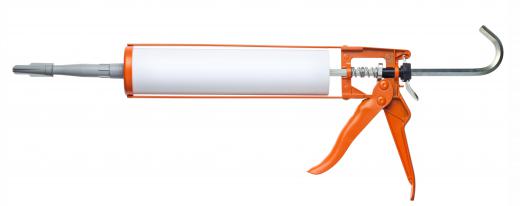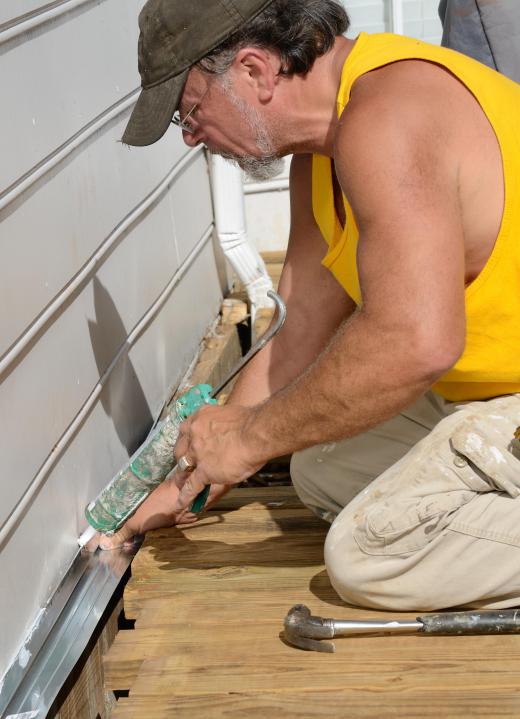Butyl caulk is a rubber based caulk that works particularly well in outdoor applications. It is well suited for applying on concrete, concrete block, brick, and stone. It does a good job of acting as a sealant when used on gutters, flashing, chimneys, and aluminum siding. This caulk's bonding ability in wet conditions makes it a particularly good choice for use underground as well as on roofs.
Butyl caulk is not as easy to work with as other forms of caulk, such as silicone, so it typically only used in areas where other types of caulk would not be effective. It takes longer to cure than other types of caulk. When applying, it can be difficult to make an even application. Often the caulk will become stringy during application. It has a tendency to shrink as it cures, which can make it necessary to reapply the caulk to fill in spots not covered after the curing process.

Clean up after using this type of caulk is more difficult than with other types of caulk as well. It requires paint thinner for clean up. Although silicone and other more forgiving types of caulk are difficult to keep neat during application, but butyl caulk requires even more patience. The caulk will come out of the end of the tube about 30 percent wider than the opening of the tube, so start with a small hole, and widen the opening if necessary.

For best results, remove all excess caulk before it cures. Wiping excess up with a finger may be second nature, but butyl caulk will not wipe off skin easily, leaving a sticky residue that will end up on the siding, stone, or anything else in the area. Keep a cloth dampened with paint thinner handy to run along any areas that require neatening while applying the caulk.
Another important consideration when working with butyl caulk is that it needs to make contact with each surface it is sealing, including each side and the bottom. Given the amount of shrinkage that can occur when applying the caulk, it makes sense to over-apply the caulk slightly during the initial application. After curing is complete, remove excess with paint thinner. Even the smallest gap between the caulk and the other surface will allow moisture in.
Practice making beads a few times before applying the caulk to the surface that requires sealing. Even people experienced with other types of caulk should practice laying a bead with butyl caulk. It is more difficult to work with than other types of caulk, and the areas where it is used, such as around skylights and chimneys, make frequent reapplications undesirable.
